BUZ11, and indeed most FETs, need rather more than 5v on the gate to turn on properly, you really need at least 10v. You can get so called 'logic level' FETs, which are specified to turn on fully with a 5v gate drive.
If you were just going to switch them on and off, then the 5.7k resistor (from a 10v source) would cut it, FETs don't draw any gate current when switched on. However, to switch them on and off requires a large amount of current to do it quickly, there is a large effective gate capacitance. All the time the FETs are switching on or off, they are dissipating a large amount of power. Switch slowly, frequently, or both, and you will put a lot of extra power into the packages. You really need a 'gate driver' therefore, capable of putting out around one amp per FET. With very slow PWM you may get away with less.
If you use a logic level FET, it may be sufficient to replace the 5.7k resistor with 10 ohms, and use one output per FET, so you get rather more current drive into the gates. This may be OK with a low PWM frequency, but you will have to check. I'm not sure why there's such a large resistor in the circuit, perhaps it's a hang-over from using the Arduino to drive bipolar transistors, where a current limiting resistor is necessary. When driving FETs, the problem is getting sufficient transient current to switch fast.
To put some numbers on the switching time, the IRL540 (linked in the comments) has a gate charge of 50nC at 20v. With 5.7k limiting the current to less than 0.5mA, it will take 100uS to shift the charge in and out. That means if the PWM frequency is 5kHz, the FET will never turn fully off or on, and will spend all its time dissipating some significant portion of 9A*24v. If you use one I/O per FET, with zero or near zero series resistance, then even if the current is only 20mA during switching, you will make the transition in a 2.5uS, and the FET will spend most of its time off, or on.
At 9A, the 40mohm of the BUZ11 will dissipate over 3 watts. That's too much for a bare TO220 package, you will need a heatsink. And that's before you start adding in any extra switching power dissipation.

